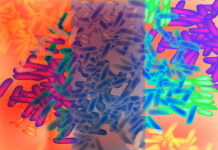 The human body is teeming with microbes—trillions of them. The commensal bacteria and fungi that live on and inside us outnumber our own cells 10-to-1, and the viruses that teem inside those cells and ours may add another order of magnitude.
The human body is teeming with microbes—trillions of them. The commensal bacteria and fungi that live on and inside us outnumber our own cells 10-to-1, and the viruses that teem inside those cells and ours may add another order of magnitude.
Genetic analyses of samples from different body regions have revealed the diverse and dynamic communities of microbes that inhabit not just the gut and areas directly exposed to the outside world, but also parts of the body that were long assumed to be microbe-free, such as the placenta, which turns out to harbor bacteria most closely akin to those in the mouth.
The mouth microbiome is also suspected of influencing bacterial communities in the lungs. Researchers are also examining the basic biology of the microbiomes of the penis, the vagina, and the skin.
“No tissue in the human body is sterile, including reproductive tissues and, for that matter, the unborn child,” Seth Bordenstein, a biologist at Vanderbilt University, says in an e-mail to The Scientist.
Altogether, the members of the human body’s microbial ecosystem make up anywhere from two to six pounds of a 200-pound adult’s total body weight, according to estimates from the Human Microbiome Project, launched in 2007 by the National Institutes of Health (NIH). The gastrointestinal tract is home to an overwhelming majority of these microbes, and, correspondingly, has attracted the most interest from the research community.
But scientists are learning ever more about the microbiomes that inhabit parts of the body outside the gut, and they’re finding that these communities are likely just as important. Strong patterns, along with high diversity and variation across and within individuals, are recurring themes in microbiome research. While surveys of the body’s microbial communities continue, the field is also entering a second stage of inquiry: a quest to understand how the human microbiome promotes health or permits disease.
Source: http://bit.ly














